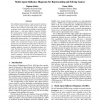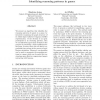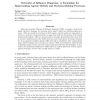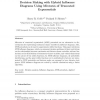10 search results - page 1 / 2 » Multi-Agent Influence Diagrams for Representing and Solving ... |
IJCAI
2001
13 years 6 months ago
2001
The traditional representations of games using the extensive form or the strategic (normal) form obscure much of the structure that is present in real-world games. In this paper, ...
UAI
2008
13 years 6 months ago
2008
We present an algorithm that identifies the reasoning patterns of agents in a game, by iteratively examining the graph structure of its Multi-Agent Influence Diagram (MAID) repres...
JAIR
2008
13 years 4 months ago
2008
This paper presents Networks of Influence Diagrams (NID), a compact, natural and highly expressive language for reasoning about agents' beliefs and decision-making processes....
UAI
2001
13 years 6 months ago
2001
In this paper we present three different architectures for the evaluation of influence diagrams: HUGIN, Shafer-Shenoy (S-S), and Lazy Propagation (LP). HUGIN and LP are two new ar...
EOR
2008
13 years 4 months ago
2008
Mixtures of truncated exponentials (MTE) potentials are an alternative to discretization for representing continuous chance variables in influence diagrams. Also, MTE potentials c...




